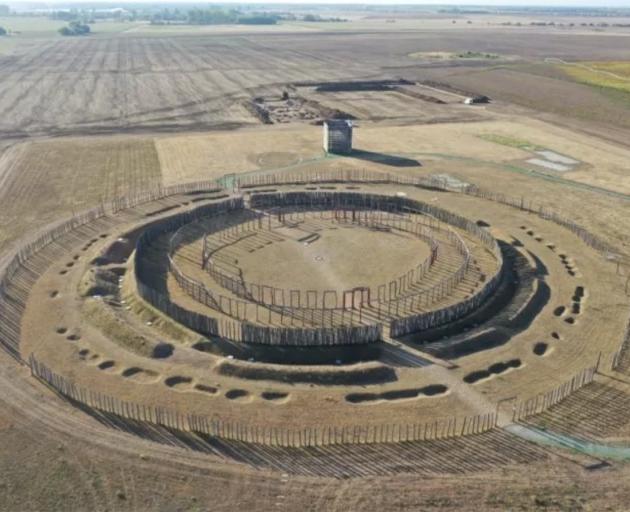Lifestyle
New Discoveries Suggest Stonehenge-Like Sites Across Europe

Recent archaeological discoveries have drawn intriguing parallels between Stonehenge and another prehistoric site known as Pömmelte in Germany. Researchers have found that Pömmelte, with its circular ditches and rings of postholes, bears a striking resemblance to Stonehenge, prompting discussions about the significance of such sites in ancient cultures.
Stonehenge, located in Wiltshire, England, has long captivated the public imagination. It served as a gathering place with a profound interest in solar movements, possibly linked to ancient rituals. According to archaeologists, Pömmelte, which dates back approximately 4,500 years, features similar solar observation circles. The key distinction lies in the construction methods: while the massive stones of Stonehenge were transported from distant quarries, the oak posts at Pömmelte were likely floated down the nearby Elbe River.
Archaeological excavations at Pömmelte revealed two rings that once held large oak posts, transforming what seemed like small circles into a significant construction. This discovery has ignited interest among historians and scientists, suggesting that Pömmelte may have served similar cultural purposes as Stonehenge.
Exploring Ritual Complexes
Both sites are part of larger ritual complexes. Stonehenge’s layout includes components like the avenue and Silbury Hill, a mound that stands at 40 meters high and matches the volume of the Egyptian pyramids. The exact purpose of these constructions remains uncertain, with some theories positing that they may have been associated with the burial of a significant prehistoric leader.
In contrast, Pömmelte boasts additional structures not found at Stonehenge. Archaeologists have uncovered an extensive settlement of about 140 long houses, indicating a thriving community. Each house was large enough to accommodate extended families, including grandparents, suggesting a complex social structure. Like Stonehenge, Pömmelte’s oak circles were also centers for solar observations.
Today, Pömmelte has been reconstructed and attracts at least 40,000 visitors annually, eager to explore its historical significance. The site offers a glimpse into a prehistoric culture that may have shared a widespread religious devotion to the sun, akin to the medieval cathedrals that later defined European spirituality.
A Shared Heritage
These findings highlight a potential pan-European religious cult centered on solar worship, with Stonehenge and Pömmelte as key examples. As researchers continue to investigate these ancient sites, they contribute to a deeper understanding of prehistoric societies and their interconnectedness across Europe.
The similarities between Stonehenge and Pömmelte raise questions about the nature of cultural exchange in ancient times. Such discoveries encourage a reevaluation of what it means to gather in community spaces dedicated to celestial events, linking modern visitors to the beliefs and practices of their prehistoric ancestors.
-

 World4 months ago
World4 months agoTest Your Knowledge: Take the Herald’s Afternoon Quiz Today
-

 Sports4 months ago
Sports4 months agoPM Faces Backlash from Fans During Netball Trophy Ceremony
-

 Lifestyle4 months ago
Lifestyle4 months agoDunedin Designers Win Top Award at Hokonui Fashion Event
-

 Entertainment5 months ago
Entertainment5 months agoExperience the Excitement of ‘Chief of War’ in Oʻahu
-

 Sports4 months ago
Sports4 months agoLiam Lawson Launches New Era for Racing Bulls with Strong Start
-

 World5 months ago
World5 months agoCoalition Forms to Preserve Māori Wards in Hawke’s Bay
-

 Health4 months ago
Health4 months agoWalking Faster Offers Major Health Benefits for Older Adults
-

 Lifestyle4 months ago
Lifestyle4 months agoDisney Fan Reveals Dress Code Tips for Park Visitors
-

 Politics4 months ago
Politics4 months agoScots Rally with Humor and Music to Protest Trump’s Visit
-

 Top Stories5 months ago
Top Stories5 months agoUK and India Finalize Trade Deal to Boost Economic Ties
-

 Health2 months ago
Health2 months agoRadio Host Jay-Jay Feeney’s Partner Secures Visa to Stay in NZ
-

 World5 months ago
World5 months agoHuntly Begins Water Pipe Flushing to Resolve Brown Water Issue









